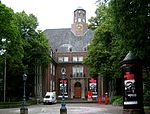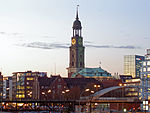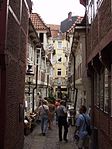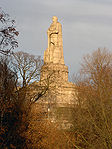Johann Adolph Hasse Museum

The Johann Adolph Hasse Museum is a museum in the Composers Quarter in Hamburg-Neustadt, Germany. The museum is dedicated to the life and work of the opera composer Johann Adolph Hasse. The presentation starts with his childhood and youth, Hasse being a descendant of church musicians from Hamburg-Bergedorf. He obtained his first music lessons from his father.The presentation continues with his career as a prominent composer. He and his wife, the opera singer Faustina Bordoni, gained international prestige and played respected roles at the European courts and theaters.The collection consists of text books of his operas (libretti), historical prints of musical compositions, scenic designs and costumes. One piece from the collection is a replica of an opera stage from the baroque era. The museum makes use of multimedia appliances and is accessible to wheelchair users.
Excerpt from the Wikipedia article Johann Adolph Hasse Museum (License: CC BY-SA 3.0, Authors, Images).Johann Adolph Hasse Museum
Peterstraße, Hamburg Neustadt
Geographical coordinates (GPS) Address Nearby Places Show on map
Geographical coordinates (GPS)
| Latitude | Longitude |
|---|---|
| N 53.551238888889 ° | E 9.9765472222222 ° |
Address
Peterstraße 39
20355 Hamburg, Neustadt
Germany
Open on Google Maps








